Shankar/Jaikishan – Jan Pehechan Ho – Gumnaam Soundtrack

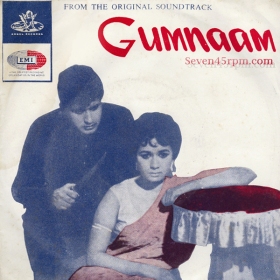 Angel Records – TAE 1248 India 1965
Angel Records – TAE 1248 India 1965
This here highly sort Indian 7″ is without argument a holy grail of the Bollywood genre, and rightly so! And as a lover of beautifully bizarre go-go soundtracks, you can imagine how thrilled I was, to have finally got my little mittens on a very nice copy only recently! I think everyone remembers that moment when their ears and eyes first experienced the infamous Jan Pehechan Ho film clip from the 1965 Indian suspense thriller.
THE MYTH – Gumnaam, which translates to Unknown or Anonymous, is a film adaptation of the 1939 book And Then There Were None by Agatha Christie, which is widely considered her masterpiece, and was actually described by herself as the most difficult to write. Publications International lists the novel as the seventh best-selling title with more than 100 million copies sold. The Bollywood film adaption was directed by Raja Nawathe, who had commenced his film career as assistant director to Raj Kapoor, for three productions between 1948 and 1951, and were titled Aag, Barsaat, and Awaara. His debut as independent director started in 1953 with the film Aah, which, at the time, did not quite make its mark at the box-office, however his next directorial venture in 1956, Basant Bahar, was a musical success, which received the Certificate of Merit for Best Feature Film in Hindi . He directed one another film before Gumnaam called Sohni Mahiwal in 1958.
 The Jan Pehechan Ho moment of Gumnaam, is a wonderful explosion of genuine music film art, and a seminal piece of Indian film history! The wild go go action takes place on the imaginary Silver Jubilee disco dance floor of the Princes Club. The floor is explosive with energy screaming from the dancers and band members, while sophisticated yet surprisingly unfazed high class diners watch on. You have masked men in tight fitted suits frantically hip swinging alongside shimmying shapely goddesses in tight pink fringing, and sometimes presented through some dynamic camera angles. And the track is purely unbeatable! Killer guitar riffs with that nice fat 60’s twang, up against the most applicable wild beat which compliments the tight horn section that seems to have lost it’s way from an Italian spaghetti western sound score.
The Jan Pehechan Ho moment of Gumnaam, is a wonderful explosion of genuine music film art, and a seminal piece of Indian film history! The wild go go action takes place on the imaginary Silver Jubilee disco dance floor of the Princes Club. The floor is explosive with energy screaming from the dancers and band members, while sophisticated yet surprisingly unfazed high class diners watch on. You have masked men in tight fitted suits frantically hip swinging alongside shimmying shapely goddesses in tight pink fringing, and sometimes presented through some dynamic camera angles. And the track is purely unbeatable! Killer guitar riffs with that nice fat 60’s twang, up against the most applicable wild beat which compliments the tight horn section that seems to have lost it’s way from an Italian spaghetti western sound score.
THE MUSIC for the film Gumnaam, was composed by Indian duo Shankar & Jaikishan, who composed music for the Hindi film industry together from 1949 to 1971. The two earlier had both worked for Prithviraj Kapoor’s Prithvi Theatres [1], a traveling troupe which staged memorable productions all across India (it was Shankar who assured a job for Jaikishan who was a key harmonium player, without the permission of Kapoor). The two of them developed a very close friendship and apart from following their musical pursuits, they also used to play significant roles in various plays including the famous play Pathan, which was performed on stage nearly 600 times in Mumbai.
 The two became known by the acronym “S-J”, and would form a core team with lyricists Shailendra and Hasrat Jaipuri, and with singers Mohammed Rafi and Lata Mangeshkar (although they also worked with almost all the popular singers of their time). The commercial geniuses lead the Bollywood music in spite of tough competition from maestros like Roshan, SD Burman, OP Nayyar and Madanmohan. S-J were the house composers or RK Films and were on their pay-roll till the end. Even after the termination of the professional association between Shankar and Raj Kapoor (Jaikishan had died by then), Kapoor had used a number of their earlier compositions (which were in his custody) for a lot of his films, though the credits were given officially to other composers.
The two became known by the acronym “S-J”, and would form a core team with lyricists Shailendra and Hasrat Jaipuri, and with singers Mohammed Rafi and Lata Mangeshkar (although they also worked with almost all the popular singers of their time). The commercial geniuses lead the Bollywood music in spite of tough competition from maestros like Roshan, SD Burman, OP Nayyar and Madanmohan. S-J were the house composers or RK Films and were on their pay-roll till the end. Even after the termination of the professional association between Shankar and Raj Kapoor (Jaikishan had died by then), Kapoor had used a number of their earlier compositions (which were in his custody) for a lot of his films, though the credits were given officially to other composers.
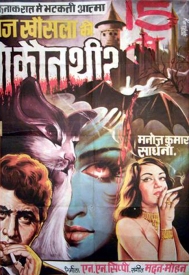 Shankar & Jaikishan’s compositions broke new ground in Hindi film music. Apart from relying upon their knowledge of Indian classical music, they also employed western beats and orchestration, and it became their established practice to have at least one song in a movie based on semi-classical style. While working as a team, Shankar and Jaikishan used to compose their songs separately. Between the two, Shankar was the senior partner and he would usually arrange the orchestra, even for Jaikishan’s songs. There was a gentleman’s agreement between them, for not identifying the actual composer of the song. Dance numbers, title/theme songs and soulful songs were Shankar’s forte while Jaikishan was a master of composing background score, but both Shankar and Jaikishan were equally proficient in scoring western music based songs. Despite their distinct working styles and preferences, it is very difficult to identify who composed what, and best to accept all their work was truly a joint effort.
Shankar & Jaikishan’s compositions broke new ground in Hindi film music. Apart from relying upon their knowledge of Indian classical music, they also employed western beats and orchestration, and it became their established practice to have at least one song in a movie based on semi-classical style. While working as a team, Shankar and Jaikishan used to compose their songs separately. Between the two, Shankar was the senior partner and he would usually arrange the orchestra, even for Jaikishan’s songs. There was a gentleman’s agreement between them, for not identifying the actual composer of the song. Dance numbers, title/theme songs and soulful songs were Shankar’s forte while Jaikishan was a master of composing background score, but both Shankar and Jaikishan were equally proficient in scoring western music based songs. Despite their distinct working styles and preferences, it is very difficult to identify who composed what, and best to accept all their work was truly a joint effort.
Shankar & Jaikishan made a major contribution towards the development of jazz music in India and the new genre Indo jazz. Their 1968 album Raaga-Jazz style, the earliest Indo-jazz recording to come from India, and is considered to be one of the most innovative, with 11 songs based on Indian Ragas with saxophone, trumpet, tabla, bass and of course with sitar by Rais Khan.
 THE LEADING MASKED MAN – That compelling personality who plays the singer-front man to this outrageous cacophony of spectacle, is dancer Herman Benjamin, also known as “Mr. Charisma”. He made his entry into the world of Hindi cinema as a choreographer, or as they were often called a “dance-master”, sometime in the late 50’s. Most often he assisted other choreographers with the more traditional dance routines, but on occasion he was handed one or two songs that leaned more towards the night club rock n’ roll numbers, that were getting more and more popular in the Bollywood films of those days. He also appeared on screen as a dancer in quite a few films of this period. Benjamin is the handsome devil prototype, and has an animalistic magnetism that Errol Flynn would duel to the death for. His apparent charming and humorous nature overflows with his maneuvers. Even among a crowded dance floor such as in the sequence of Tin Kanastar Peet Peet Karhis from the 1958 film Love Marriage, his distinct drawing power is undeniable. It‘s also evident that Benjamin studied Herbert “Whitey” White’s school of Lindy Hoppers and jitterbuggers, perhaps only through film, because some of his moves are brilliantly borrowed from the 40’s and 50’s! While Benjamin plays the moves in grand style, it is believed that Surya Kuma who at the time, was inspired by an English dance craze called “The Shake”, was likely the mastermind behind the Jan Pehechan Ho dance floor phenomena (both he and Benjamin helped choreograph the dances in Gumnaam). Benjamin sadly passed away on 13th September 1968 and was only 37 years old, which is such an injustice, but I’m so grateful he left a huge legacy of film attributions credited up until 1971, for us to enjoy.
THE LEADING MASKED MAN – That compelling personality who plays the singer-front man to this outrageous cacophony of spectacle, is dancer Herman Benjamin, also known as “Mr. Charisma”. He made his entry into the world of Hindi cinema as a choreographer, or as they were often called a “dance-master”, sometime in the late 50’s. Most often he assisted other choreographers with the more traditional dance routines, but on occasion he was handed one or two songs that leaned more towards the night club rock n’ roll numbers, that were getting more and more popular in the Bollywood films of those days. He also appeared on screen as a dancer in quite a few films of this period. Benjamin is the handsome devil prototype, and has an animalistic magnetism that Errol Flynn would duel to the death for. His apparent charming and humorous nature overflows with his maneuvers. Even among a crowded dance floor such as in the sequence of Tin Kanastar Peet Peet Karhis from the 1958 film Love Marriage, his distinct drawing power is undeniable. It‘s also evident that Benjamin studied Herbert “Whitey” White’s school of Lindy Hoppers and jitterbuggers, perhaps only through film, because some of his moves are brilliantly borrowed from the 40’s and 50’s! While Benjamin plays the moves in grand style, it is believed that Surya Kuma who at the time, was inspired by an English dance craze called “The Shake”, was likely the mastermind behind the Jan Pehechan Ho dance floor phenomena (both he and Benjamin helped choreograph the dances in Gumnaam). Benjamin sadly passed away on 13th September 1968 and was only 37 years old, which is such an injustice, but I’m so grateful he left a huge legacy of film attributions credited up until 1971, for us to enjoy.
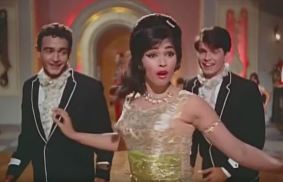 THE LEADING LADY – Strutting alongside Benjamin’s skillful and tight dance floor motions, dressed in tight gold lamé, is the stand out prismatic and blazing lead female dancer Laxmi Chhaya! Her wild energy is captivating and ferocious during the Jan Pehechan Ho routine, and it’s difficult to comprehend that she was only 18 at the time of shooting, when she danced herself into film history. In fact Chhaya was nine when she appeared in her first film Talaq in 1958, when director Mahesh Kaul had spotted her among the guests on the sets. Three years later her role in Bada Aadmi, established her as a dancing star. Although she’s most likely most recognised for her Gumnaam role on this side of the world, Chhaya in fact had a major and successful career in the Bollywood circuit, working in over 55 film productions between 1961 through to at least 1982. Just a year after Gumnaan, Herman choreographed the routine for Aaja Aaja for Nasir Husain’s Teesri Manzil. Chhaya again had a feature role, but this time she is far more sedated, with her part as a spectator. Maybe after her earlier smoking Jan Pehechan Ho performance, the Indian screen management felt they needed to cool things down for a while.
THE LEADING LADY – Strutting alongside Benjamin’s skillful and tight dance floor motions, dressed in tight gold lamé, is the stand out prismatic and blazing lead female dancer Laxmi Chhaya! Her wild energy is captivating and ferocious during the Jan Pehechan Ho routine, and it’s difficult to comprehend that she was only 18 at the time of shooting, when she danced herself into film history. In fact Chhaya was nine when she appeared in her first film Talaq in 1958, when director Mahesh Kaul had spotted her among the guests on the sets. Three years later her role in Bada Aadmi, established her as a dancing star. Although she’s most likely most recognised for her Gumnaam role on this side of the world, Chhaya in fact had a major and successful career in the Bollywood circuit, working in over 55 film productions between 1961 through to at least 1982. Just a year after Gumnaan, Herman choreographed the routine for Aaja Aaja for Nasir Husain’s Teesri Manzil. Chhaya again had a feature role, but this time she is far more sedated, with her part as a spectator. Maybe after her earlier smoking Jan Pehechan Ho performance, the Indian screen management felt they needed to cool things down for a while.
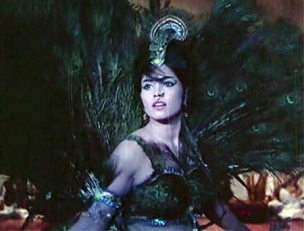 Chhaya moments of spectacular grandeur are a plenty in this time of Bollywood cinema. One of those spell binding moments is from the 1968 film Suhaag Raat, where there’s a cobra and peacock dance off between two beauties, Madhumati who convincingly plays the sensual serpent, up against the peacock adorned Chhaya! The battle is furiously tense and tight, and amazingly fought til the end! In the 1970 S. Sukhdev directed film My Love, there’s a seductive devilish dance by blond bombshell “Caron Leslie” to some low grinding grooves composed by Daan Singh [2]. With the devil shadowing her moves, the room gets so heated that uncomfortable onlookers almost turn away with embarrassment and guilt. But once Chhaya gets the nod things get even hotter on the dance floor. Miss Leslie is swiped by a far more dominant, spirited and high powered challenger, and the music is to revved up with heated frantic African tribal beats! Below I’ve listed a few of my favourite Chhaya moments of wonderment well worth looking at.
Chhaya moments of spectacular grandeur are a plenty in this time of Bollywood cinema. One of those spell binding moments is from the 1968 film Suhaag Raat, where there’s a cobra and peacock dance off between two beauties, Madhumati who convincingly plays the sensual serpent, up against the peacock adorned Chhaya! The battle is furiously tense and tight, and amazingly fought til the end! In the 1970 S. Sukhdev directed film My Love, there’s a seductive devilish dance by blond bombshell “Caron Leslie” to some low grinding grooves composed by Daan Singh [2]. With the devil shadowing her moves, the room gets so heated that uncomfortable onlookers almost turn away with embarrassment and guilt. But once Chhaya gets the nod things get even hotter on the dance floor. Miss Leslie is swiped by a far more dominant, spirited and high powered challenger, and the music is to revved up with heated frantic African tribal beats! Below I’ve listed a few of my favourite Chhaya moments of wonderment well worth looking at.
 THE BAND – The brilliance of Jan Pahechan Ho shines further beyond the dance floor and lifts up onto the bandstand. The group “performing” the anthem is known as Ted Lyons and his Cubs. Regardless of the cult popularity of this Bollywood performance, I found it difficult to find a lot of information on this mythical line-up. In fact when watching the clip, the line is blurred between actual bands members from bands actors, especially without knowing the real life line up of the Cubs. But it’s not important and the blend is splendid. I can tell you that the leader of the pack, Terence “Ted” Lyons plays the centered guitarist (with the red guitar) and is brother to the famous dancer/film actress Edwina Lyons (his other sister Marie Shinde was a very active dancer and choreographer also at that time). In the 1967 film Raat Aur Din, Edwina dancers along with Laxmi Chhaya to Awaara Ae Mera Dil, which also features Ted Lyons And His Cubs, however this time Terence has moved away from band member to join the dance floor society (he can be seen, especially near the end of the song, dancing in the shadows to the left of the band). Aficionados of Bollywood cinema would possibly recognise The Cubs appearing frequently in famous films, one other notable presence is in the film of the same year, Janwar. The song is an adopted “I Wanna Hold Your Hand”, titled Dekho Ab To, where this time Ted is behind the drum kit of The Cubs (pictured).
THE BAND – The brilliance of Jan Pahechan Ho shines further beyond the dance floor and lifts up onto the bandstand. The group “performing” the anthem is known as Ted Lyons and his Cubs. Regardless of the cult popularity of this Bollywood performance, I found it difficult to find a lot of information on this mythical line-up. In fact when watching the clip, the line is blurred between actual bands members from bands actors, especially without knowing the real life line up of the Cubs. But it’s not important and the blend is splendid. I can tell you that the leader of the pack, Terence “Ted” Lyons plays the centered guitarist (with the red guitar) and is brother to the famous dancer/film actress Edwina Lyons (his other sister Marie Shinde was a very active dancer and choreographer also at that time). In the 1967 film Raat Aur Din, Edwina dancers along with Laxmi Chhaya to Awaara Ae Mera Dil, which also features Ted Lyons And His Cubs, however this time Terence has moved away from band member to join the dance floor society (he can be seen, especially near the end of the song, dancing in the shadows to the left of the band). Aficionados of Bollywood cinema would possibly recognise The Cubs appearing frequently in famous films, one other notable presence is in the film of the same year, Janwar. The song is an adopted “I Wanna Hold Your Hand”, titled Dekho Ab To, where this time Ted is behind the drum kit of The Cubs (pictured).
According to Memsaab’s incredible blog dedication, Feel the love! Ted Lyons & His Cubs, he emigrated to Brisbane, Australia, in 1972, resulting with the break up of the band and any further screen appearances. He says that he danced way more than he appeared with his band, and although they played plenty of weddings and events, no studio recordings were ever produced. He spent 20 years in the Bombay film industry as a dancer and drummer/band leader.
THE SINGER – The actual voice behind the man behind the mask, is the legendary and prolific Bollywood singer Mohammed Rafi. He was born 24 December 1924, as the fifth of six sons in a village near Amritsar, Punjab (the family moved to Lahore later in the 1920’s). Rafi’s elder brother, Mohammad Deen, had a friend Abdul Hameed, who recognised Rafi’s talent and would encourage him to sing, and later even convinced the family elders to let Rafi move to Mumbai.
There’s an infamous story about Mohammed Rafi’s rise to stardom. One time he and his brother Hamid went to attend a performance by the renown K.L. Saigal. The power went off (and from my brief experiences in Indian, a common occurrence even these days), and the dignified Saigal refused to sing without the benefit of the sound system. With agitated audiences tempers brewing, Hamid persuaded the organisers to allow Rafi to sing for them until the power was restored. It was readily agreed and everyone in the house was impressed, including the great composer and music director Shyam Sunder who happened to be among the audience. Rafi was invited to sing for one of his films in 1944 at the age of 20, with the song Soniye Hiriye, Teri Yaad Ne Bahut Sataya, for the film Gul Baloch, and was quickly brought to attention of other music directors.
 Early in his career Rafi got a huge break when he got to work with Naushad Ali (pictured), one of the foremost musical directors for Hindi films of the time. His versatile musical vocabulary offered him a myriad of singing roles, one highlight must have been in the 1960 film Mughal-E-Azam, where Rafi sang Ae Mohabbat Zindabad, alongside a chorus of 100 singers. This relationship would establish himself as one of the most prominent playback singers in the industry cinema and he ended up singing a total of 149 songs for Naushad.
Early in his career Rafi got a huge break when he got to work with Naushad Ali (pictured), one of the foremost musical directors for Hindi films of the time. His versatile musical vocabulary offered him a myriad of singing roles, one highlight must have been in the 1960 film Mughal-E-Azam, where Rafi sang Ae Mohabbat Zindabad, alongside a chorus of 100 singers. This relationship would establish himself as one of the most prominent playback singers in the industry cinema and he ended up singing a total of 149 songs for Naushad.
Rafi’s partnership with Shankar & Jaikishan was also very famous and successful (Rafi was their favourite singer despite having good reputation with other playback singers of the time). Out of six Filmfare awards, Rafi won three for S-J songs, and sang a total of 341 numbers (216 solo) for the partnership! With the voice in demand, he would also work with other big name producers. S.D.Burman used Rafi as a singing voice of Dev Anand and Guru Dutt, and would end up collaborating on 37 movies. Rafi also worked with the great Ravi Shankar, and in fact received his first Filmfare Award for the title song of Chaudhvin Ka Chand (1960), which was composed by Ravi. Rafi also received the National Award for Ravi’s song “Babul Ki Duaen Leti Ja” from the film Neel Kamal (1968), and admits that he actually wept during the recording of this stirring song. Myself, I love the swaying Baar Baar Dekho he sang for China Town in 1962.
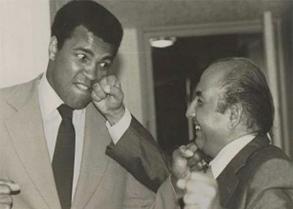 Mohammed Rafi died on 31 July 1980, following a massive heart attack…his funeral procession was one befitting a king. Said to have been the biggest funeral processions Mumbai had ever witnessed, with over 10,000 people attending despite heavy rains on that day. The government of India announced a two-day public holiday in his honour. In 2010, Rafi’s tomb was demolished to make space for new burials. Fans who visit his tomb twice a year to mark his birth and death anniversaries, use the coconut tree that is nearest his grave as a marker. Rafi was a big player in the history of Indian film which goes with out saying, and there’s actually some great sites out there that celebrate this man’s career and achievements, which I recommend new fans of this genre pursue.
Mohammed Rafi died on 31 July 1980, following a massive heart attack…his funeral procession was one befitting a king. Said to have been the biggest funeral processions Mumbai had ever witnessed, with over 10,000 people attending despite heavy rains on that day. The government of India announced a two-day public holiday in his honour. In 2010, Rafi’s tomb was demolished to make space for new burials. Fans who visit his tomb twice a year to mark his birth and death anniversaries, use the coconut tree that is nearest his grave as a marker. Rafi was a big player in the history of Indian film which goes with out saying, and there’s actually some great sites out there that celebrate this man’s career and achievements, which I recommend new fans of this genre pursue.
 THE SONG – The lyrics to Shankar-Jaikishan’s Jan Pahechan Ho is by Shailendra (Shankardas Kesarilal), a popular songwriter who had already won the Filmfare Best Lyricist Award twice before Gumnaan. But sadly his promising career was cut short, when he was just 43 years of age. In 1961 Shailendra invested heavily in the production of the movie Teesri Kasam (released in 1966), directed by Basu Bhattacharya and starring Raj Kapoor and Waheeda Rehman. Although the film won the National Film Award for Best Feature Film, it was a commercial failure. Stress, tensions and anxiety due to financial loss quickly contributed to his defeating health, and coupled with alcohol abuse, ultimately led to his death on 14 December 1966.
THE SONG – The lyrics to Shankar-Jaikishan’s Jan Pahechan Ho is by Shailendra (Shankardas Kesarilal), a popular songwriter who had already won the Filmfare Best Lyricist Award twice before Gumnaan. But sadly his promising career was cut short, when he was just 43 years of age. In 1961 Shailendra invested heavily in the production of the movie Teesri Kasam (released in 1966), directed by Basu Bhattacharya and starring Raj Kapoor and Waheeda Rehman. Although the film won the National Film Award for Best Feature Film, it was a commercial failure. Stress, tensions and anxiety due to financial loss quickly contributed to his defeating health, and coupled with alcohol abuse, ultimately led to his death on 14 December 1966.
If you look up the literal interpretation on the song, well the words and meanings kind of bump into each other, which is not uncommon ofcourse. Here’s my blurry attempt at the song’s interpretation, mashing some of those online translations.
Oh you stealer of my heart…you who avoid my gaze…at least tell me your name.
For it will never return, not by anybodys calling…
straight and direct…they have pierced my heart…
All this small talk…should not be a town story…
I am sure my feeble translation is questionable, but do go to grabbingsand.org, for some fun and more in-depth translations, by people far more competent than myself .
IN CLOSING – Indian vinyl is not the easiest to find, especially in good playing condition. But this is a must for 7 lovers and you are rewarded with Lata Mangeshkar’s Gumnaam Hai Koi, a lovely cover version Henry Mancini’s of Charade! I have to mention that you will find an edited cut down version on the EP. (I do find the 3 minute edit version very does the job adequately), so if you’re after the long play version that you know and love from the film cut, them the LP could be a good option, which does appear far more often on the market. Note that the LP cover pictured above is the repress cover from Angel Records that came out the a little later in the same year of ’65.
To have Raja Nawathe and his collaborators all combining visions and talents, at what must have been a most amazing time, and to be rewarded with unbeatable masterpiece that is Jan Peechan Ho, is a blessing that will keep us music lovers dancing and smiling for a very, very long time!
Some great Chhaya dance floor appearances…
1 – Upkar -1967 Gulaabi Raat Gulaabi
2 – Wahan Ke Log -1967 (with Indian space go-go gals!) Woh Pyaar Pyaar Pyaar Pyaar Chanda
3 – Baharon Ke Sapne – 1967 (duel with Laxmi Chhaya and Bela Bose) Do Pal Jo Teri
4 – Suhaag Raat – 1968 “Cobra And Peacock Fight” 1968
5 – My Love – 1970 Laxmi Chhaya and Caron Leslie
6 – Ek Khiladi Bawan Pattey – 1972 (hippie love) Le Le Ye Dil Ka Nagina Bahroopiye Log Saare
[1] In over 16 years of existence, the theater staged some 2,662 performances with Prithviraj supposedly starring as the lead actor in every single show. By the late 1950s, it was clear that the era of the traveling theater had been irreversibly supplanted by the cinema, which was sweeping across the lands. Clearly it was no longer financially feasible for a troupe of up to 80 people to travel the country for four to six months at a time, along with their props and equipment and living in hotels and campsites. Many of the fine actors and technicians that Prithvi Theatres nurtured had found their way to the movies.
[2] Carole Lesley (Maureen Rippingale) was a British actress who had a short but significant career as a “blonde bombshell”. In this film, this particular actress is credited as Caron Leslie. I am almost certain this is not her in this film but a dedicated inspired impersonator instead. But I could be wrong.
References and recommendations…
R. D. Burman – Baby, let’s dance together – Shalimar (OST)

 Polydor Cat# 2221 334 India 1978
Polydor Cat# 2221 334 India 1978
Track 1- Let’s Dance Together Track 2 – Cha Cha Cha!
Rahul Dev Burman was born on June 27, 1939 in Kolkata, to the Bollywood composer/singer Sachin Dev Burman and his lyricist wife Meera Dev Burman. According to some stories, he was nicknamed Pancham da because, as a child, whenever he cried, it sounded in the fifth note (Pa), G scale, of music notation (the word Pancham means five, or fifth, in Bengali, his mother tongue). Another theory says that little Rahul received the nickname because he could cry in five different notes.
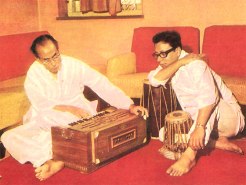 When Burman was nine years old, he composed his first song, Aye meri topi palat ke aa, which his father used in the 1956 film Funtoosh. Sar jo tera chakraaye was included in Guru Dutt’s 1957 soundtrack for Pyaasa, and was also another father/son collaboration this time sung by Gumnaan singer Mohammed Rafi. In Mumbai, Burman learnt to play the sarod by classical musician Ali Akbar Khan and also the tabla by Samta Prasad . He also considered composer poet and a playwright, Salil Chowder as his guru. He served as an assistant to his father, and often played harmonica in his orchestras.
When Burman was nine years old, he composed his first song, Aye meri topi palat ke aa, which his father used in the 1956 film Funtoosh. Sar jo tera chakraaye was included in Guru Dutt’s 1957 soundtrack for Pyaasa, and was also another father/son collaboration this time sung by Gumnaan singer Mohammed Rafi. In Mumbai, Burman learnt to play the sarod by classical musician Ali Akbar Khan and also the tabla by Samta Prasad . He also considered composer poet and a playwright, Salil Chowder as his guru. He served as an assistant to his father, and often played harmonica in his orchestras.
RD Burman’s first released film as an independent music director was Chhote Nawab (1961). Popular Bollywood comedian Mehmood was the producer and first approached Burman’s father for the music, however he had to turn down the offer, saying that he did not have any free dates available. At that very meeting, Mehmood noticed Rahul playing tabla in a back room, and signed him up as the music director for the film. Burman’s first hit movie as a film music director was Teesri Manzil (1966), which starred Shammi Kapoor, who is hailed as one of the most entertaining lead actors that Hindi cinema has ever produced, and was married to actress beauty Geeta Bali. The scored had six songs, all of which were written by Majrooh Sultanpuri, and sung by Mohammed Rafi. Four of these were duets were with his future wife and superstar Asha Bhosle (apparently they first met when she was the mother of two and he was in 10th grade having dropped out to pursue music). I advise you to search for the brilliant Hassina zulfo walli clip, where you witness some amazing set designing, which is actually quite typical in this wonderful film genre. Nasir Hussain went on to sign RD Burman and lyricist Majrooh Sultanpuri for six of his films.
 In 1971, Burman composed the music for Dev Anand’s Hare Rama Hare Krishna. Asha Bhosle won the Filmfare Best Female Playback Award for the infamous electrifying Dum Maro Dum (Take Another Toke), from this film, which was a huge hit and proved to be a seminal rock number in Hindi film music. Dev Anand did not include the complete version of Dum Maro Dum in the movie, because he was worried that the song would overshadow the film. The hit film was a star-making vehicle for the model and beauty queen, Zeenat Aman, who won over the heart’s of world audiences, in her role as the westernized hippie, Janice. [1] The film was a huge success for her, going on to win the Filmfare Best Supporting Actress Award, as well as the BFJA Award for Best Actress. She would become one of the highest paid Hindi actress between 1976-80 and appeared on every Hindi film magazine’s cover during the 1970s. Hare Rama Hare Krishna dealt with the decadence of the Hippie culture. It aimed to have an anti-drug message and also depicts some problems associated with Westernization such as divorce, and is said to be loosely based on the 1968 Richard Rush movie Psych-Out.
In 1971, Burman composed the music for Dev Anand’s Hare Rama Hare Krishna. Asha Bhosle won the Filmfare Best Female Playback Award for the infamous electrifying Dum Maro Dum (Take Another Toke), from this film, which was a huge hit and proved to be a seminal rock number in Hindi film music. Dev Anand did not include the complete version of Dum Maro Dum in the movie, because he was worried that the song would overshadow the film. The hit film was a star-making vehicle for the model and beauty queen, Zeenat Aman, who won over the heart’s of world audiences, in her role as the westernized hippie, Janice. [1] The film was a huge success for her, going on to win the Filmfare Best Supporting Actress Award, as well as the BFJA Award for Best Actress. She would become one of the highest paid Hindi actress between 1976-80 and appeared on every Hindi film magazine’s cover during the 1970s. Hare Rama Hare Krishna dealt with the decadence of the Hippie culture. It aimed to have an anti-drug message and also depicts some problems associated with Westernization such as divorce, and is said to be loosely based on the 1968 Richard Rush movie Psych-Out.
Bombay to Goa is a 1972 Bollywood adventure-comedy film directed by S. Ramanathan, and is actually a remake of a 1966 hit Tamil film Madras to Pondicherry. The movie is known particularly for its catchy tunes and includes Usha Iyer’s incredible Listen To The Pouring Rain which is a cool mashup of tunes such as Temptation, Fever and ends with a frenzied Be-Bop-A-Lula! In 1976, the Vijay Anand directed spy thriller, Bullet was released with yet another exciting soundtrack. This time Asha Bhosle is back providing the vocals on the trippy Peene Ke Baad Aati Hai Yaad Bhooli, again with suitable bizzaro film sets to match! Oh to be on that set when this was all happening!
 The 1978 Hollywood and Bollywood joint production film Shalimar starred Dharmendra, Shammi Kapoor, Prem Nath, Aruna Irani and once again Zeenat Aman (pictured right). Also in supporting roles in their first and only Bollywood film was, English actor Sir Rex Harrison, and American actors John Saxon and Sylvia Miles. The film was released in two versions; Hindi in India and also an English version in the US, known as Raiders of the Sacred Stone (and supposedly also as The Deadly Thief). All versions however were unsuccessful, although later gaining cult status. In this Indian crime adventure, the world’s best jewel thief invites his illustrious peers to try to steal the world’s most priceless jewel, the Shalimar ruby, from his home on a remote private island. If they fail, they will die.
The 1978 Hollywood and Bollywood joint production film Shalimar starred Dharmendra, Shammi Kapoor, Prem Nath, Aruna Irani and once again Zeenat Aman (pictured right). Also in supporting roles in their first and only Bollywood film was, English actor Sir Rex Harrison, and American actors John Saxon and Sylvia Miles. The film was released in two versions; Hindi in India and also an English version in the US, known as Raiders of the Sacred Stone (and supposedly also as The Deadly Thief). All versions however were unsuccessful, although later gaining cult status. In this Indian crime adventure, the world’s best jewel thief invites his illustrious peers to try to steal the world’s most priceless jewel, the Shalimar ruby, from his home on a remote private island. If they fail, they will die.
The Shalimar soundtrack is packed with Burman gems! While the credibility of the film plot may be somewhat questionable, Burman’s work on the score is genuinely masterful and simply like nothing else. The Title Music has to be the number one all time opener to come from the Bollywood genre, and how I wish it was circulated on a 7”. Intense off beat jazz constructions, over operatic vocals, this masterpiece is a tip of the hat to greats like Morricone and John Barry, and I don’t say that lightly.
One of the film’s o n going musical themes, is the delightful Hum Bewafa Hargiz Na Thay, which at one time comes with a pretty extraordinary beach tribal dance scene filmed at night. And Mera Pyar Shalimar with Asha Bhosle’s dreamy vocals is pure ecstasy. Sylvia Miles who had won two Oscar nominations for Best Supporting Actress in the movies Midnight Cowboy and Farewell My Lovely, apparently snatched the role of Countess Rasmussen, from the intended Gina Lollobrigida, Italian sex symbol of the fifties and sixties. She plays a far fetched trapeze artist-master thief, who seems to have a love for doing an over excessive amount of somersaults and cart wheels that’s really ever necessary. In one scene where the countess is attempting a break in and theft of the Shalimar jewel, one of Burman’s big jazz tracks Countess’ Caper, plays over the top, doing it’s best to add drama, but really only adding even more lunacy to the moment.
n going musical themes, is the delightful Hum Bewafa Hargiz Na Thay, which at one time comes with a pretty extraordinary beach tribal dance scene filmed at night. And Mera Pyar Shalimar with Asha Bhosle’s dreamy vocals is pure ecstasy. Sylvia Miles who had won two Oscar nominations for Best Supporting Actress in the movies Midnight Cowboy and Farewell My Lovely, apparently snatched the role of Countess Rasmussen, from the intended Gina Lollobrigida, Italian sex symbol of the fifties and sixties. She plays a far fetched trapeze artist-master thief, who seems to have a love for doing an over excessive amount of somersaults and cart wheels that’s really ever necessary. In one scene where the countess is attempting a break in and theft of the Shalimar jewel, one of Burman’s big jazz tracks Countess’ Caper, plays over the top, doing it’s best to add drama, but really only adding even more lunacy to the moment.
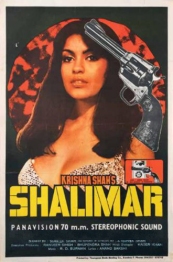 Moving on to the feature 7”, of the 2 tracks, Baby Let’s Dance Together, sung by the mysterious Kittu, is the standout for me. A laid back super chic funk oozing pure class, this song criminally only gets a brief look in during the film, as a background track to an enticing bedroom scene from Sheila Enders to S.S. Kumar, that quickly ends in an argument. Who the vocalist Kittu is, I can’t really tell you, as the only other song credit I could find from her, was for the track I Have a Crush On You from the 1980 Ek Baar Phir, film directed by Vinod Pande. The second track on offering is the quirky work out, One Two Cha Cha Cha, which actually has the responsibility of opening the film even before the aforementioned diabolical Title Music. Vocals provided by Usha Uthup, accompanied nicely with the expected Burman Moog and sitar, the opening set up brings us into a day lit seedy gambling club, with Sheila Enders approaching an eager flare filled dance floor, who she will provide a personal instructional dance routine for. What a way to open a spy thriller. That’s the way ah ha, ah ha, I like it!
Moving on to the feature 7”, of the 2 tracks, Baby Let’s Dance Together, sung by the mysterious Kittu, is the standout for me. A laid back super chic funk oozing pure class, this song criminally only gets a brief look in during the film, as a background track to an enticing bedroom scene from Sheila Enders to S.S. Kumar, that quickly ends in an argument. Who the vocalist Kittu is, I can’t really tell you, as the only other song credit I could find from her, was for the track I Have a Crush On You from the 1980 Ek Baar Phir, film directed by Vinod Pande. The second track on offering is the quirky work out, One Two Cha Cha Cha, which actually has the responsibility of opening the film even before the aforementioned diabolical Title Music. Vocals provided by Usha Uthup, accompanied nicely with the expected Burman Moog and sitar, the opening set up brings us into a day lit seedy gambling club, with Sheila Enders approaching an eager flare filled dance floor, who she will provide a personal instructional dance routine for. What a way to open a spy thriller. That’s the way ah ha, ah ha, I like it!
Burman’s genius workings for this soundtrack did not go unnoticed, resulting with 3 Filmfare nominations…Best Music – R.D. Burman, Best Male Playback Singer – Kishore Kumar for the song Hum Bewafa Harghiz Na, and Best Female Playback Singer – Usha Uthup for One Two Cha Cha, which funnily enough ended up being won by Asha Bhosle for the Kalayanji Anandji track Yeh Mera Dil Yaar Ka Diwana from the exceptional Don score. The highly regarded LP comes in a few variants, the best in my view is the fold out cover with the intricate die-cut inserts nicely formatted with film stills. If you need to have a few important Bollywood soundtracks in your collection, this one’s on the top of the list and isn’t too difficult to find, although as with most Indian records, it pays to hold off until you can find a nice conditioned record.
 Burman would go on to release more killer soundtracks, and a handful with accompanying 7″s. Getting into some serious stuff, I want to bring up The Burning Train score. When I first heard the opening score I really struggled to believe it wasn’t a contemporary production. I love this period of Burman! Released in 1980, directed by Ravi Chopra, the film featured a huge all-star cast [2]. The plot revolves around a train named Super Express that catches fire on its inaugural run from New Delhi to Mumbai. It’s out of control, the drivers are dead, and many lives will certainly expire if somehow the burning train isn’t stopped. I’ll be a bit more elaborate on this film when the time comes (and it will) to post that particular soundtrack. But this is R.D. Burman on FIRE as the title track clearly displays, as well as the Latin flavoured Meri Nazar Hai TujhPe if you even needed more proof.
Burman would go on to release more killer soundtracks, and a handful with accompanying 7″s. Getting into some serious stuff, I want to bring up The Burning Train score. When I first heard the opening score I really struggled to believe it wasn’t a contemporary production. I love this period of Burman! Released in 1980, directed by Ravi Chopra, the film featured a huge all-star cast [2]. The plot revolves around a train named Super Express that catches fire on its inaugural run from New Delhi to Mumbai. It’s out of control, the drivers are dead, and many lives will certainly expire if somehow the burning train isn’t stopped. I’ll be a bit more elaborate on this film when the time comes (and it will) to post that particular soundtrack. But this is R.D. Burman on FIRE as the title track clearly displays, as well as the Latin flavoured Meri Nazar Hai TujhPe if you even needed more proof.
If it was one Bu rman really excelled at, it was drawing in audiences into films with exciting title tracks, and Hindi action thrillers such as the 1980 Shaan (Pride) provided the perfect platform. This film was directed by Ramesh Sippy after the super success of his previous venture, Sholay. He drew inspiration from the American Western and spaghetti western films, and took its lead from the James Bond films with fancy sets and beautiful costumes. Shaan took three years to make and it was expected to match the success of Sholay but failed to do so, however, it ran to packed houses in its re-runs and ended up making a lot of money. Eventually, it was declared to be the highest grosser of 1980 by IBOS. Once again the opening track Doston Se Pyar Kiya with the mighty Usha Uthup on vocals, is exciting and abstract, and perfectly wigged out! Thanks to Burman, the film recieved a Best Music nomination at Filmfare, this being its sole nomination. For the Bollywood Rocky film, also released in 1980, Burman gave us some killer breaks and spaced out “borrowing” with the War of the World’s inspired Aa Dekhen Jara.
rman really excelled at, it was drawing in audiences into films with exciting title tracks, and Hindi action thrillers such as the 1980 Shaan (Pride) provided the perfect platform. This film was directed by Ramesh Sippy after the super success of his previous venture, Sholay. He drew inspiration from the American Western and spaghetti western films, and took its lead from the James Bond films with fancy sets and beautiful costumes. Shaan took three years to make and it was expected to match the success of Sholay but failed to do so, however, it ran to packed houses in its re-runs and ended up making a lot of money. Eventually, it was declared to be the highest grosser of 1980 by IBOS. Once again the opening track Doston Se Pyar Kiya with the mighty Usha Uthup on vocals, is exciting and abstract, and perfectly wigged out! Thanks to Burman, the film recieved a Best Music nomination at Filmfare, this being its sole nomination. For the Bollywood Rocky film, also released in 1980, Burman gave us some killer breaks and spaced out “borrowing” with the War of the World’s inspired Aa Dekhen Jara.
In 1983, Chor Police, the directorial debut movie of Bollywood actor Amjad Khan, includes one of my all time favourite Bollywood dance numbers, Aaj Mera Dil. In yet another Bhosle-Burman classic, we have once again another killer dance sequence, this time it’s the Indian beauty Parveen Babi as Seema, drawing the audience right in with her hypnotizing moves. Audacious and daring, starting with a slow and wonderfully psychedelic intro, simple exotic moog lines are soon swooped over by spaced out guitar riffs, perfectly syncopated percussion and Asha’s “from another world” vocal lines…this is one of Burman’s best!
 Burman also made an international “non-film” album not many know about, a Latin-American-Indian monster, nowadays quite sort. Released in ‘87, Pantera was financed by his father, and as well with his friend Pete Gavankar, who wanted the aspiring musician to explore the music scene outside India. The idea at first didn’t really appeal to the reluctant Burman, for it was well known those days that producing a record usually took months in that part of the world, and he wasn’t sure he wanted to move away from his home land. In 1981, Gavankar borrowed 15 tunes from RD, who had composed them in a matter of seven days and handed the tapes to his sister Nilu, who was connected to pop groups in San Francisco. Nilu played the tunes to an upcoming musician Jose Flores who immediately liked five compositions and recorded them. Back in India, Burman heard the tracks, and it charged him up enough to go to San Francisco and record an album. It was carnival season when Pancham landed in San Fran’on June 15, 1984. The atmosphere there inspired him so much that he composed the tracks Carnival and Caminando almost immediately. One evening, they visited a disco where Burman’s and Jose’s joint collaborated In Every City was played. He recalls how all the people started dancing, and then how they all clapped at the climax. He was so moved he almost cried. All the artists on Pantera were significant musicians, and it also included vocalists from diverse backgrounds – a Japanese, a Puerto Rican and an African-American.
Burman also made an international “non-film” album not many know about, a Latin-American-Indian monster, nowadays quite sort. Released in ‘87, Pantera was financed by his father, and as well with his friend Pete Gavankar, who wanted the aspiring musician to explore the music scene outside India. The idea at first didn’t really appeal to the reluctant Burman, for it was well known those days that producing a record usually took months in that part of the world, and he wasn’t sure he wanted to move away from his home land. In 1981, Gavankar borrowed 15 tunes from RD, who had composed them in a matter of seven days and handed the tapes to his sister Nilu, who was connected to pop groups in San Francisco. Nilu played the tunes to an upcoming musician Jose Flores who immediately liked five compositions and recorded them. Back in India, Burman heard the tracks, and it charged him up enough to go to San Francisco and record an album. It was carnival season when Pancham landed in San Fran’on June 15, 1984. The atmosphere there inspired him so much that he composed the tracks Carnival and Caminando almost immediately. One evening, they visited a disco where Burman’s and Jose’s joint collaborated In Every City was played. He recalls how all the people started dancing, and then how they all clapped at the climax. He was so moved he almost cried. All the artists on Pantera were significant musicians, and it also included vocalists from diverse backgrounds – a Japanese, a Puerto Rican and an African-American.
 Rahul Dev Burman was quite ahead of his time, and his music came with a harmony, uniqueness and an integrity. Often been credited for revolutionising Bollywood music, he successfully blended Latin sounds, cabaret, psychedelic vibes and disco and funk styles. He experimented with an array of new sounds with great execution, and developed songs that went to become massively popular with the audience. But even after 331 released movie scores, he was awarded a total of only three Filmfare Awards, one of which was awarded posthumously (for 1942: A Love Story). [3]
Rahul Dev Burman was quite ahead of his time, and his music came with a harmony, uniqueness and an integrity. Often been credited for revolutionising Bollywood music, he successfully blended Latin sounds, cabaret, psychedelic vibes and disco and funk styles. He experimented with an array of new sounds with great execution, and developed songs that went to become massively popular with the audience. But even after 331 released movie scores, he was awarded a total of only three Filmfare Awards, one of which was awarded posthumously (for 1942: A Love Story). [3]
In 1995, Filmfare Awards constituted the Filmfare RD Burman Award for New Music Talent in his memory. Pancham da’s death in 1994, after a massive heart attack, left a void in the Indian film music industry, but even over two decades later, his lilting melodies and soulful tunes continue to inspire and influence musicians and music aficionados alike. Hindi film music is forever indebted to him.
Top picture…Sachin Dev Burman with his son, Rahul Dev Burman. Image owned by Penguin India (rediff.com)
B&W picture…Hare Rama Hare Krishna Director-Actor Dev Anand with Rahul Dev Burman (thequint.com)
[1] Zeenat Aman did her schooling in Panchgani and went to University of Southern California in Los Angeles for further studies on student aid, but she could not complete her graduation. Upon her return to India, she first took up a job as a journalist for Femina and then later on moved on to modeling. One of the first few brands that she modeled for was Taj Mahal Tea in 1966. She was the second runner up in the Miss India Contest and went on to win the Miss Asia Pacific in 1970.
Dev Anand offered Zaheeda (his second heroine in Prem Pujari) the role of his sister in Hare Rama Hare Krishna. Not realizing the importance of this secondary role, Zaheeda wanted the lead female part (eventually played by Mumtaz) and she opted out. Zeenat Aman was chosen as a last-minute replacement. Her hip looks in Yaadon Ki Baaraat (1973) as the girl carrying a guitar, singing Churaliya Hai Tumne Jo Dil Ko (over Asha Bhosle’s voice) has won her more popularity and the hearts of millions of fans.
Zeenat Aman unfortunately had to deal with domestic violence in both her marriages. Sanjay Khan, her first husband, had reportedly bashed her up leaving a permanent scar on her eye, and vision problems. Her second husband Mazhar Khan also reportedly harassed the actress physically. A brave Aman dressed up as a village girl with a burnt face when she approached Raj Kapoor’s office, when he was finalising his heroine for Satyam Shivam Sundaram. He was so impressed and proud of her dedication, that he signed her right then.
[2] Dharmendra, Hema Malini, Vinod Khanna, Parveen Babi, Jeetendra, Neetu Singh, Vinod Mehra, and Danny Denzongpa.




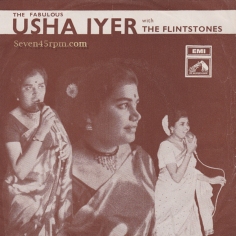
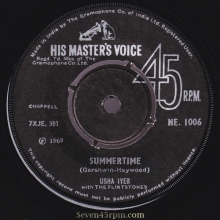


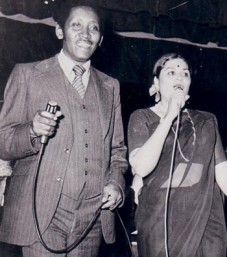
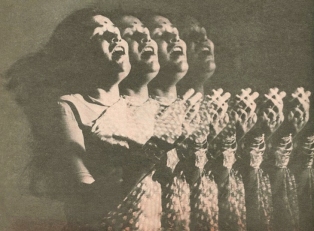
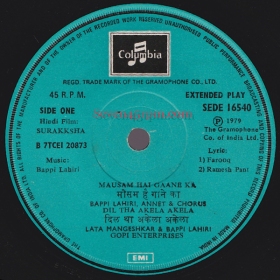



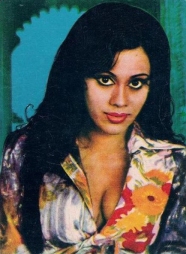

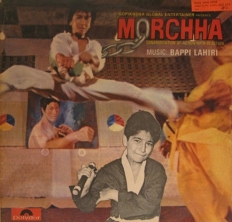
Recent Comments